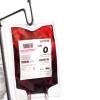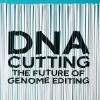Researchers in Australia have found a way to introduce natural mutations into blood cells that could lead to new therapies for sickle cell anaemia and other blood disorders.

University of New South Wales scientists used gene editing to introduce the mutations into blood cells as a way to boost fetal hemoglobin production.
The mutations that cause the disorders are naturally carried by a small percentage of people, but the highly individualised method could help treat some of them.
Study co-author Merlin Crossley said: “Our new approach can be seen as a forerunner to ‘organic gene therapy’ for a range of common inherited blood disorders, including beta thalassaemia and sickle cell anemia.
“It is organic because no new DNA is introduced into the cells; rather we engineer in naturally occurring, benign mutations that are known to be beneficial to people with these conditions.”
This could lead to new treatments, the researchers claim, but more research is needed.




